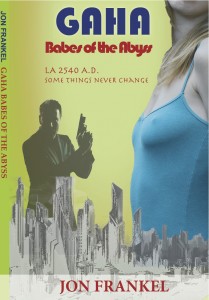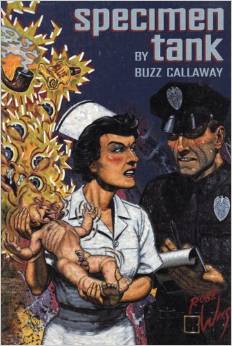JESUS IN A PORK PIE HAT
By Lydia Millet
Soft Skull Press 2005
I don’t read books about writing usually but Stephen King’s ON Writing is an exception. In that book King writes that his books begin with what if scenarios and they run out from there. Lydia Millet’s gorgeous, tragic, Oh Pure and Radiant Heart is obviously such a book. What if Robert Oppenheimer, Leo Szilard and Enrico Fermi were transported to the present day at the moment of the first nuclear explosion?
Oh Pure and radiant Heart begins with a dream, or a reverie: Ann has a vision of Robert Oppenheimer, kneeling in the desert and watching the first Trinity test. She awakens disturbed, unsure if what she dreamed was real. And so does Robert Oppenheimer, in present day Santa Fe. Soon the other two join him. Szilard, who was in Chicago on the day of the Trinity test, must travel to do so.
What follows is the story of their encounter with our world and Ann’s, and her husband Ben’s, encounter with them. Initially there is the expected confusion: perhaps Ann is mad, or the men are imposters. The scientists themselves are perplexed and appalled by 21st century America. The violence, the stupidity, and more than anything, the destruction of the natural world. They are also doubtful of their own ontological status.
Ann is an introverted librarian. Ben is a gardener. They exist in the twilight of upper class, New Age Santa Fe. Theirs is an all enveloping relationship with no room for outsiders. Ben is patient, she is a little, just a little, neurotic. She is also the main portal on this alternate universe. And she is a cipher, an emptiness into which the narrative pours its riches.
The effect on their relationship is summed up by Ben: “…he was a shifting element in her eyes but no longer a central one….His wife had new enthusiasms.†This last sentence conveys the dry humor and understatement of her writing.
Ann brought the scientists to the present; they are each other’s link to a mystery they are determined to understand or explain, but cannot. The scientists, naïve and autarchic, need her protection.  She is their connection to the world, their mother, and she feels the obligation, the forgiving love of a mother. But they are also the first truly meaningful event in her life beyond her marriage. Life with the three scientists is exciting.
Led by Szilard, who is disliked by Fermi and Oppenheimer, and who is aggressively adapting to the language and mores of America, the scientists decide they must go on a crusade to save the earth from the terror they feel they have helped unleash. A pivotal moment is their visit to Japan. The full horror of nuclear war transforms them. And it is there that they meet their benefactor, the child of a billionaire, Larry. Larry is a gullible, new age, pot smoking 40 something guy searching for a cause. He bankrolls what Szilard and Oppenheimer hope will be a social protest movement that will not only end nuclear weapons but transform the consciousness of the world from one of violence and destruction to one that values the natural world and lives in peace. It doesn’t work out as they hope. Evangelical christians join their movement and take over.
The book has been described as ‘surreal’ but it is not surreal at all. Other than the fact of the scientists’ translation in time the events are natural and real. There is no possibility from within the narrative to dismiss the whole thing as a delusion, dream or vision. It is rather a convergence in time, an inscrutable singularity that simply is. Until the end, the action is realistic.
Millet’s prose is precise and beautifully modulated. Her sense of place, of space is perfect. Her visual descriptions are vivid and her sentences are concise and elegant. Each word is polished and balanced against the next. Her sentences are like a Satie Gymnopedie.
Millet is a cool observer. There is distance between narrator and character even when reporting their inner thoughts and feelings. Between narrative chapters there are short interludes reflecting on the political, environmental, spiritual and philosophical consequences of the action or stating historical facts and details of the development and deployment of nuclear weapons from their conception to the present. These interludes serve a choral function, certainly, but they also make it a very serious book, philosophical and rich with history.
The environment is ever present. Ben’s gardening for narcissistic billionaires is contrasted to the devastation of the wild world around them, and there is the ever present grief of Oppenheimer and Fermi. The wasteland of the Nevada test site and Los Alamos, of the repeated nuclear bombing of the world become figures for who we are and what we’ve become. It is an apocalyptic book, explicitly. But in the end, as Oppenheimer observes, and I paraphrase, it was not nuclear weapons that destroyed humanity but the mind that created them.
I loved this book. I read some Amazon negative reviews to get a sense of what ordinary readers disliked: It was too long. The thoughts were confusing. The Joycean (or French) use of dashes to offset dialogue instead of quotation marks bothered people. It’s depressing or hopeless. It has no plot, it’s just people thinking. No wonder the publisher was a marginal press in Brooklyn. The New Yorker review dismissed the book as having stereotyped characters, the evangelicals, government agents, new agers. The book was not about them, but rather about something absurd, hopeless and true meeting its destruction in the poisonous hypocrisy and stupidity of our moment, our time. Time circling back on itself, effect meeting cause. Oppenheimer, on the verge of dying again, doesn’t blame them. Like Chaucer’s Troilus he has a vision of earth from the air and laughs at the human comedy. But for Ben and Ann there isn’t that solace.




